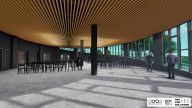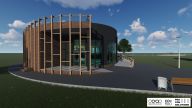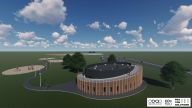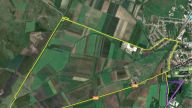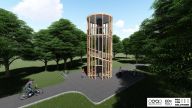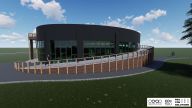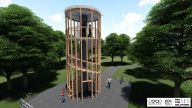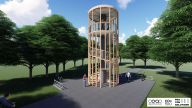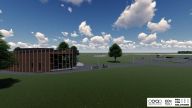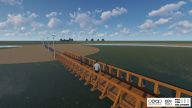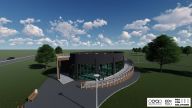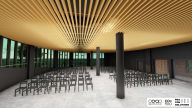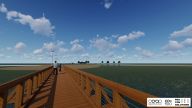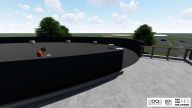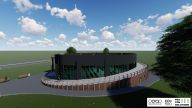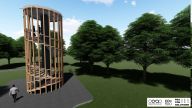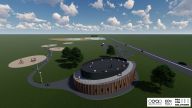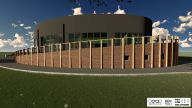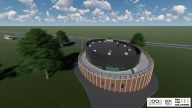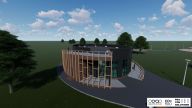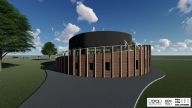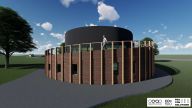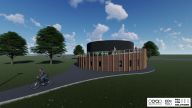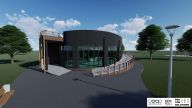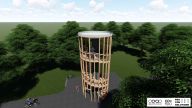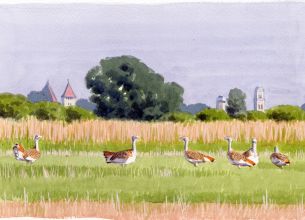The rehabilitation of the reed lake, a swamp that had become eutrophicated in the Culișer meadow, located in Salonta, Bihor county, has been carried out in the past 3 years within our project based on cross-border public-private partnership.
The Great Bustard’s Nest

21 June 2019
A visitor centre to bring people closer to the natural assets of Salonta
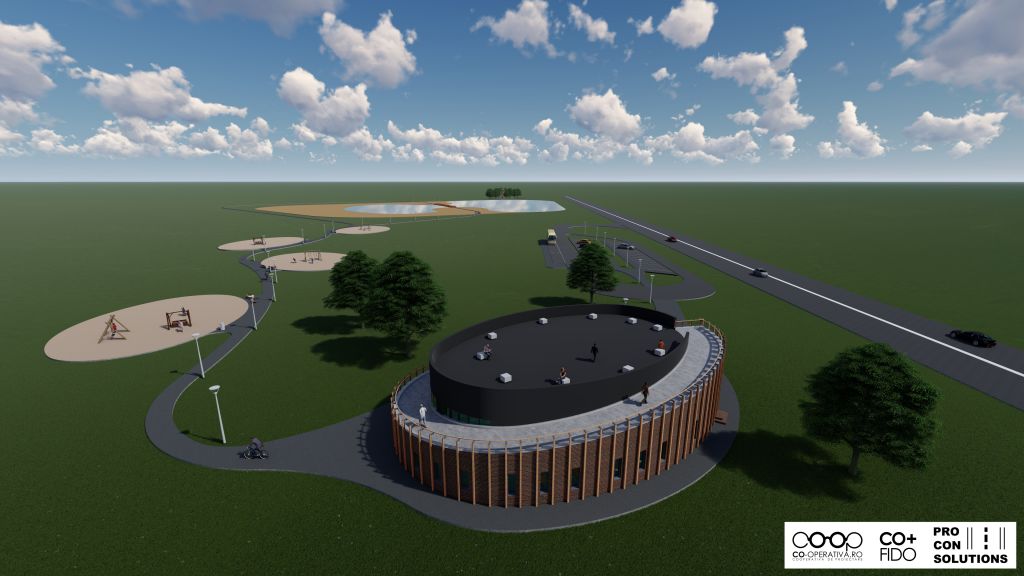
Within the administrative jurisdiction of Salonta there is a region included in the Natura 2000 network of protected areas – the Cefa Fishery and Rădvani Forest, a Special Protection Area (SPA). One of the most important natural assets of this site is the Great Bustard (Otis tarda). And here lives the only viable population of Romania, consisting of approximately 50 birds. The most important breeding, nesting and wintering sites lie in the territory of Salonta (up to boundaries of the protected area). Moreover, the meadows stretching south of Salonta are both nesting and feeding places for various species such as: Montagu’s Harrier (Circus pygargus), Lesser Grey Shrike (Lanius minor), the European Roller (Coracias garrulus), and the feeding grounds of the Hen Harrier (Circus cyaneus).
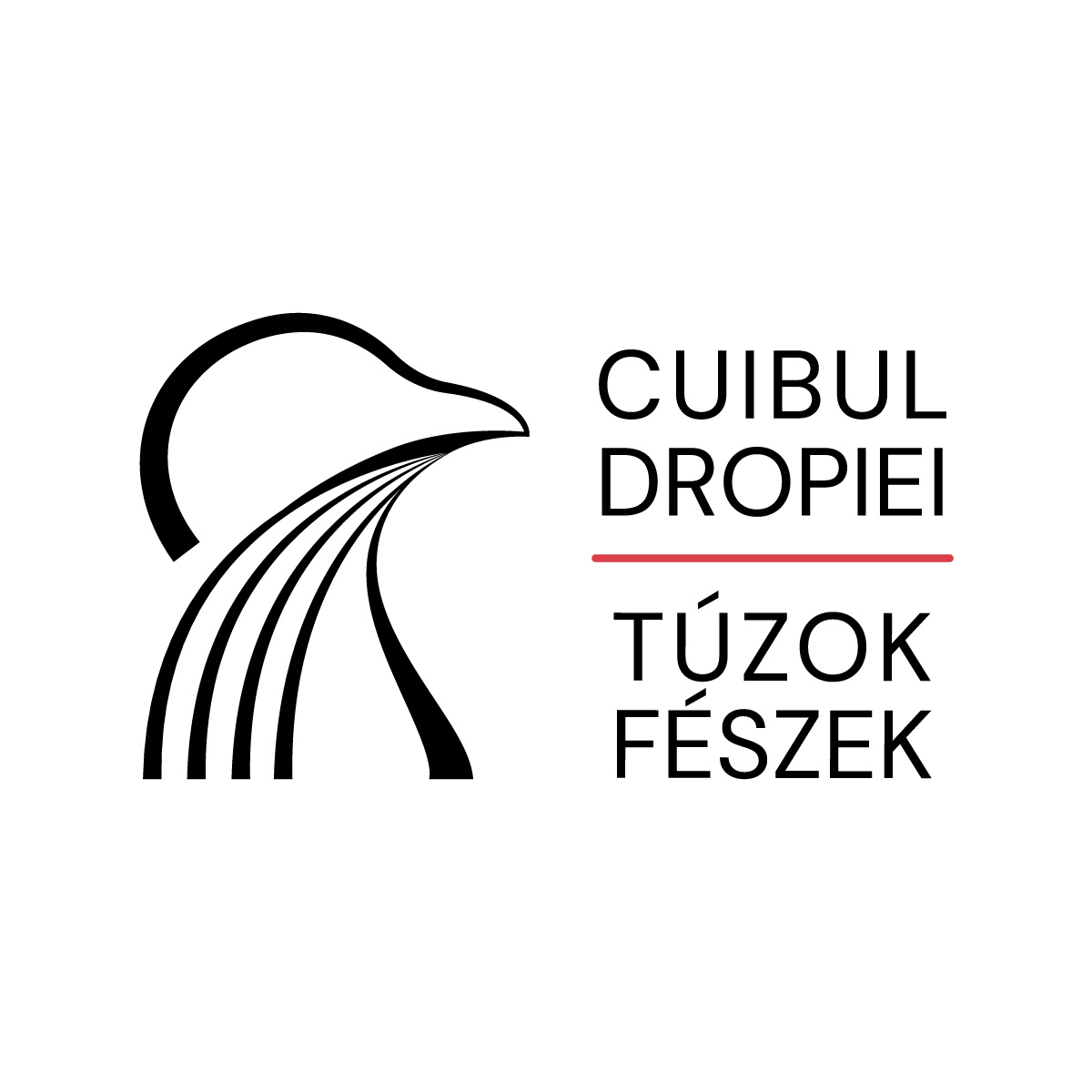
The main purpose of “Cuibul Dropiei” (The Great Bustard’s Nest) Centre is to promote the natural heritage. The centre will provide locals and tourists alike information about the local natural assets, the species that live in the area and how they can be protected. It will be built in the south-western part of Salonta, at the exit to Arad and Hungary.
Here, both indoor and outdoor, educational and scientific programmes will be organised all year round: various events for tourists, permanent and temporary exhibitions, presentations, workshops, scientific conferences, ecological education programmes for children, etc. The structure will be modular and adaptable to all sorts of activities, as it will be an elliptic open space encircled by a ramp that will include additional rooms.
Awareness raising and ecological education are the main aims of the centre, in addition to other measures and actions that will be undertaken by the City Hall of Salonta. Thus, in order to avoid the medium and large-sized birds’ collisions with power lines, 6 km long medium voltage electric cables will be transferred underground. This will also enlarge the bustards’ habitat. Traps for predators will be installed, and stray domestic animal management will be carried out.
The centre will provide various options for people to spend their spare time while enjoying the local natural values. Besides the playground for children and the relaxation areas, the visitors will be able to cycle along the themed routes and the restored eutrophic lake, up to the observation tower. This will allow them to watch birds, and also to have a good view of the surroundings.
The reed lake of Salonta is a natural wetland with marshland vegetation of tall grasses (Pop, 1968). The existing old maps show that this lake was formed in the Culișer’s riverside, in one of the swampy valleys of the area named Nádas-ér [Hungarian], that holds this name up to this day [nádas (Hun.) = with reed]. The eutrophic lake is a Natura 2000 area which will be ecologically restored to ensure the survival and conservation of various species of fish, whose habitats have been destroyed and whose population is continually decreasing because of to human intervention. A species inventory of plants, herpetofauna, ichthyofauna and ornithofauna of the area will be undertaken, and their status and condition will be permanently monitored during the restoration process. Eventually, a wooden bridge will be installed over green peninsulas and reed abundant areas.
The themed routes will reveal the local natural assets in the Salonta-Bekescsaba area (The Great Bustard and other species, their habitat, landscape, specific local rural lifestyle – Tanyavílág (Hungarian), various habitats with their distinctive species: fresh water, meadows and forest steppe, as well as the Natura 2000 sites). Two themes routes will be completed with the support of Milvus Transilvania Vest Association project partner:
- in the centre’s area – by the new bicycle route
- by the already-existing Salonta-Békéscsaba bicycle route.
The idea of such a project is quite innovative in this part of Romania and the concept is to combine nature conservation with modern building practices. We do hope that our project will serve as a good practice model for other areas with threatened species.
The City Hall of Salonta
Milvus Group

